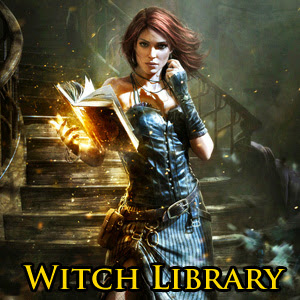
Historical Roots to Modern PracticeThe roots of the religion called Wicca, or Witchcraft, are very old, comingdown to us through a variety of channels worldwide. Although any generalstatement about our practices will have exceptions, the following will attemptto present a basic foundation for understanding. Some of the old practices werelost when indigenous religions encountered militant Christianity and wereforced to go underground for survival. The ancient mystery religions were lostwhen the practice of the rites was stopped and the old oral traditions were nolonger available. Parents transmitted their traditions to their children, withparts being lost and new parts created in succeeding generations. Thesesurvivals, along with research into the old ways, provide a rich foundation formodern practice. Other factors contributing to the revival of the Craft arearchaeological and anthropological studies of the religious practices ofnon-Christian cultures, the works of the Golden Dawn and other metaphysicalorders, and the liberalization of anti-Witchcraft laws.Modern Witches hold rituals according to the turning of the seasons, the tidesof the moon, and personal needs. Most rituals are performed in a ritual spacemarked by a circle. We do not build church buildings to create this sacred,ritual space -- all Earth is sacred and in touch with the Goddess and so anyplace, indoors or out, may be consecrated for ritual use. Outdoor spaces tendto be used from Ostara to Lammas, indoor spaces from Samhain to Imbolc.The CircleWithin this sacred circle, two main activities occur: celebration, and thepractice of magic. Celebration is most important at the major seasonal holydays, the Sabbats. At these times, the myths of that particular holiday areenacted in ritual drama, and dancing, singing, feasting, and revelry are allpart of the festivities. On these occasions we celebrate our oneness with lifeon Earth, as well as assimilating on the deepest level myths and archetypeswhich map and assist our own life-passages.Magic is more often performed at smaller gatherings, called Esbats, whichcoincide with the phases of the moon. Types of magic practiced include psychichealing sessions, the focus and direction of energy to achieve positiveresults, and work toward the individual spiritual development of the covenmembers. Magic is an art which requires adherence to certain principles, and aconscious direction of will toward the desired end. We believe it to be anattribute of magic that results toward which the will is directed return to thesender threefold. Therefore, Witches are very conscientious in their use ofmagic.When the celebration, teaching, or magical work is finished, the blessing ofthe Goddess (and God) is called into food and drink which are shared by all.The circle is opened, and the space is no longer consecrated.The Tools of a WitchTo create the circle, and in the working of magic, we use tools to facilitate aframe of mind in which the psychic state necessary for this kind of work can beachieved. The tools are part of a complete and self-consistent symbolic systemwhich is agreed upon by the participants and provides them with a "map" forentry into unfamiliar psychic spaces. Such a system, like a map, is arbitraryand not "true" in an absolute sense; it is a guide to a state which isineffable and can be most clearly reached through the arts (poetry, music,dance, drama) and "starlight" vision.A primary tool, which is owned by most Witches, is an athame or ritual knife.The athame is charged with the energy of the owner and is used as a pointer todefine space (such as casting a sacred circle) and as a conductor of theowner's will and energy.Other important tools are the symbols on the altar which denote the"Aristotelian" Elements: Earth, Air, Fire, and Water (some "maps" includeSpirit). A pentagram or pentacle (a five-pointed star sometimes surrounded bya circle) is often used to symbolize Earth and its properties -- stability,material wealth, the body, and practical affairs. Alternatively, a small dishof salt or soil can be used to symbolize the Earth Element. A thurible (orcenser) or a bell can be used to symbolize Air and its properties --communications, vitality, intellect and understanding. (A sword or wand may beused to symbolize Air or Fire, and many "maps" disagree on with which elementthe sword or wand should be associated.) A candle or small pot of fire maysymbolize the element of Fire and its properties -- will, transmutation,life-force, and power. A chalice of water is used to symbolize the element ofWater and its properties -- cleansing, regeneration, and emotion. In thetraditions which include the element of Spirit, an ankh, keppen rod or quartzcrystal is used to symbolize Spirit and its properties -- perfection,summation, balance, illumination and eternity.There are many other minor tools which are used for some specific purposeswithin magical workings, but the tools described above are the basic ones usedin the practice of Witchcraft, and many of the minor tools are extrapolationsof the basic ones (e.g. the broom of the wand, the sword of the athame, thecauldron of the cup, etc.)Personal DevelopmentSince these tools are merely the conductors of personal energies, as copper isa conductor for electrical energy, most covens provide at least some degree oftraining in psychic skills and healing practices to strengthen each member'sability to participate in the religious activities. Each individual decideswhat level of such training is useful for them. We see psychic abilities as anatural human potential, and are dedicated to developing this as well as all ofour positive human potentials.
Source: wizard-notes.blogspot.com











